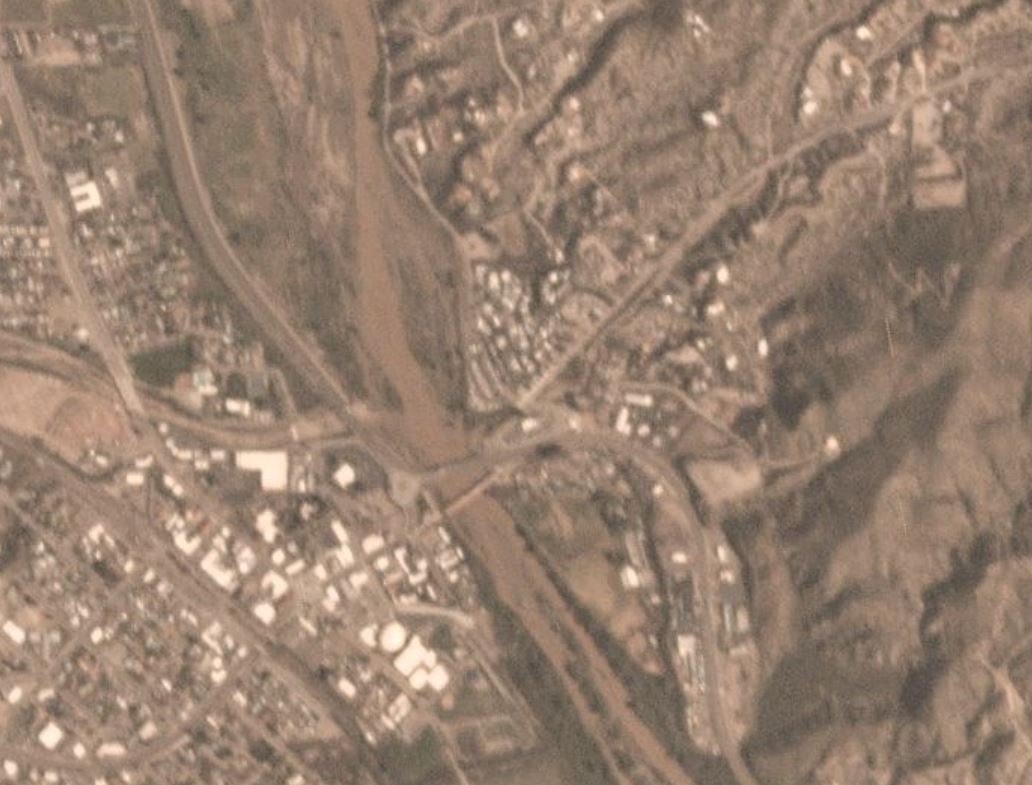ASU scientists use commercial satellite data to determine water flow in Southwestern rivers

A Dove satellite from the aerospace company Planet. Doves make up the world's largest constellation of Earth-imaging satellites and provide fresh Earth images daily. Credit: Planet
NASA has funded an Arizona State University project to use commercial CubeSat data to determine the presence of water in arid and semiarid rivers in California and Arizona. CubeSats are small satellites, typically the size of a shoebox, that can orbit the Earth and even travel in deep space.
The study, led by hydrologist and professor Enrique R. Vivoni of ASU’s School of Earth and Space Exploration and School of Sustainable Engineering and the Built Environment, will provide data and assessments that can assist Southwestern states in their efforts to manage water resources, impose regulations on pollution and maintain water quality in rivers.
Traditionally, approaches for determining water in rivers are conducted using ground-based field surveys that use the presence (or absence) of plant or animal species associated with flowing conditions. These approaches are usually labor- and time-intensive and often limited by access to remote areas.
For this study, Vivoni and Zhaocheng Wang, who is a graduate student in the School of Sustainable Engineering and the Built Environment, developed a new approach to use Earth-observing satellites to detect flowing water in arid rivers.
“One of the strengths of this approach is the ability to map the streamflow regime of rivers across large arid and semiarid regions at very high spatial and temporal resolution,” Vivoni said. “This is much more difficult, or nearly impossible, to do via ground-based field surveys.”
Vivoni and Wang are working primarily with remote sensing imagery from two commercial satellite companies: Planet, which has a fleet of nearly 200 Earth-imaging satellites and images the whole Earth land mass on a daily basis; and Maxar, which designs and manufactures satellites and spacecraft components for communications, Earth observation and exploration.
“Commercially acquired remote sensing data have unprecedented resolution. I think they provide new and exciting insights into Earth science research,” Wang said. “I am thrilled for the opportunity to make innovations happen using those cool datasets in this project.”

A satellite image of the Hassayampa River near Wickenburg, Arizona. Credit: Planet
The study will run through November 2022 and they plan to provide data that can be used for flood forecasting, hazards estimates, determining streamflow status, developing surface-groundwater interaction studies and assessing riverine habitats. The access to satellite imagery is provided by the Commercial Smallsat Data Acquisition program established by NASA.
“Our motivation for this study has been the recent changes in the protection of Arizona’s rivers, which removed ephemeral (infrequently flowing) rivers from the waters of the United States designation,” Vivoni said.
This work builds on a recently completed project with Arizona Department of Environmental Quality in the Hassayampa River of central Arizona. In collaboration with agency scientists, Wang and Vivoni developed a new method to detect when, and how often, water was present in large rivers using changes in the color of the channel sediments.
"Our partnership with ASU has yielded promising results to document the streamflow status of Arizona's waters using satellite imagery," said ADEQ Senior Scientist Patti Spindler. "ADEQ supports the use of this high-quality research and novel methodology to enhance our understanding of the state's waters."
More Science and technology

ASU professor wins NIH Director’s New Innovator Award for research linking gene function to brain structure
Life experiences alter us in many ways, including how we act and our mental and physical health. What we go through can even…

ASU postdoctoral researcher leads initiative to support graduate student mental health
Olivia Davis had firsthand experience with anxiety and OCD before she entered grad school. Then, during the pandemic and as a…

ASU graduate student researching interplay between family dynamics, ADHD
The symptoms of attention deficit hyperactivity disorder (ADHD) — which include daydreaming, making careless mistakes or taking…